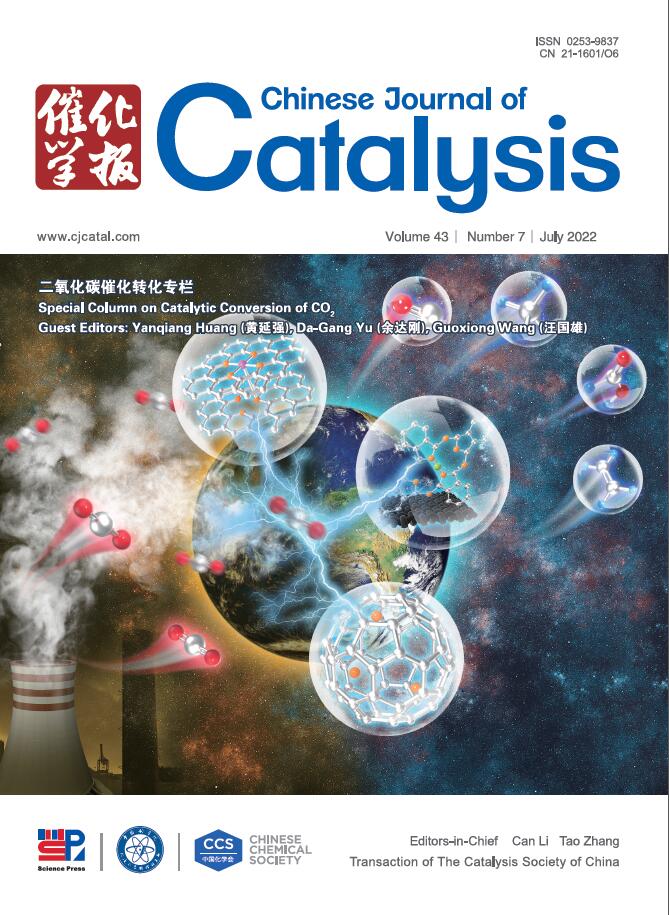Boost proton transfer in water oxidation by constructing local electric fields on BiVO4 photoanodes
IF 17.7
1区 化学
Q1 CHEMISTRY, APPLIED
引用次数: 0
Abstract
The slow-proton-fast-electron process severely limits the catalytic efficiency of oxygen evolution reaction. A method is proposed to accelerate proton transfer by building up local electric fields. Modifying acetic, ethanedioic and propanetricarboxylic (C6H8O6) ligands on BiVO4 surface results in a potential difference between BiVO4 and ligands that generates a local electric field which serves as a driving force for proton transfer. Among the ligands, carrying the strongest electron-withdrawing ability, the modification of C6H8O6 forms the strongest local electric field and leads to the fastest proton transfer and the smallest thermodynamic overpotential. C6H8O6-BiVO4 exhibits 3.5 times photocurrent density as high as that of pure BiVO4, which is 3.50 mA cm–2 at 1.23 VRHE. The onset potential of C6H8O6-BiVO4 shifts negatively from 0.70 to 0.38 VRHE. The mechanism for OER transitions from thermodynamically high energy proton-coupled electron transfer to thermodynamically low energy electron transfer as proton transfer is accelerated.
在BiVO4光阳极上构建局部电场促进水氧化过程中的质子转移
慢质子-快电子过程严重限制了析氧反应的催化效率。提出了一种通过建立局域电场加速质子转移的方法。在BiVO4表面修饰乙酸、乙二酸和丙三羧酸(C6H8O6)配体,使BiVO4和配体之间产生电位差,从而产生局部电场,作为质子转移的驱动力。在这些配体中,C6H8O6的修饰具有最强的吸电子能力,形成最强的局部电场,质子转移最快,热力学过电位最小。在1.23 VRHE下,C6H8O6-BiVO4光电流密度为3.50 mA cm-2,是纯BiVO4光电流密度的3.5倍。C6H8O6-BiVO4的起效电位从0.70 VRHE负移至0.38 VRHE。研究了质子加速转移过程中OER从高能质子耦合电子转移到低能电子转移的机理。
本文章由计算机程序翻译,如有差异,请以英文原文为准。
求助全文
约1分钟内获得全文
求助全文
来源期刊

Chinese Journal of Catalysis
工程技术-工程:化工
CiteScore
25.80
自引率
10.30%
发文量
235
审稿时长
1.2 months
期刊介绍:
The journal covers a broad scope, encompassing new trends in catalysis for applications in energy production, environmental protection, and the preparation of materials, petroleum chemicals, and fine chemicals. It explores the scientific foundation for preparing and activating catalysts of commercial interest, emphasizing representative models.The focus includes spectroscopic methods for structural characterization, especially in situ techniques, as well as new theoretical methods with practical impact in catalysis and catalytic reactions.The journal delves into the relationship between homogeneous and heterogeneous catalysis and includes theoretical studies on the structure and reactivity of catalysts.Additionally, contributions on photocatalysis, biocatalysis, surface science, and catalysis-related chemical kinetics are welcomed.
 求助内容:
求助内容: 应助结果提醒方式:
应助结果提醒方式:


